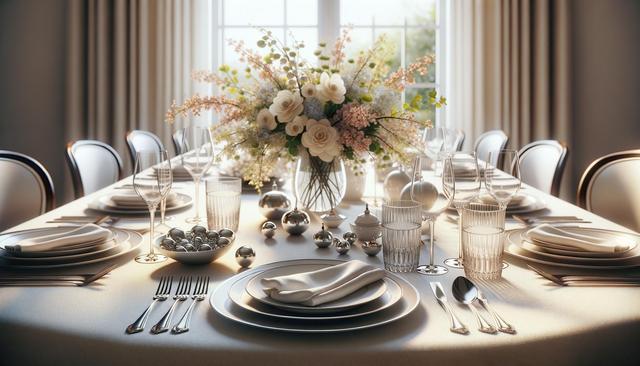The Heart of the Home
The dining table often serves as the central hub in a home, bringing people together for meals, conversations, and shared experiences. Whether it’s used daily or reserved for special occasions, it holds a symbolic and functional role in our living spaces. For families, it’s a place where schedules are synchronized, stories are exchanged, and connections are strengthened. Even in smaller households or apartments, a dedicated dining area can create a sense of order and warmth.
Beyond family use, the dining table also adapts to the needs of singles, roommates, and guests. It can double as a workspace during the day and transform into a cozy dinner setting at night. The flexibility of the dining table makes it a practical yet emotionally significant piece of furniture in any home.
Choosing the Right Dining Table
Selecting the right dining table involves more than just style preferences—it requires thoughtful consideration of space, material, and lifestyle. Rectangular tables tend to suit larger rooms and provide ample seating, while round or square tables are ideal for smaller areas and promote more intimate conversations.
Here are a few factors to consider when choosing a dining table:
- Material: Wood offers a classic and warm appearance, while glass can make a room feel more open. Metal and composite materials provide durability and a modern aesthetic.
- Seating capacity: Think about the number of people you host regularly. Extendable tables offer flexibility for different occasions.
- Height and legroom: Ensure there’s enough space for diners to sit comfortably, especially if the table will be used for long meals or additional activities.
By aligning your choice with your living needs, you can ensure your dining table remains a functional and cherished element in your home.
Styling Your Dining Area
Once the right table is chosen, styling your dining area is the next step in creating an inviting atmosphere. The style of chairs, lighting, and decorative accents all contribute to the overall mood and functionality of the space. Mixing and matching textures and finishes can add depth, while sticking to a cohesive color palette ensures visual harmony.
Consider these ideas to enhance your dining space:
- Lighting: A pendant light or chandelier above the table sets the tone and defines the area.
- Centerpieces: Seasonal flowers, candles, or simple bowls can serve as eye-catching focal points.
- Wall art or mirrors: These elements can add personality and make the room feel larger and brighter.
Good styling enhances not only the aesthetic appeal but also the comfort and usability of the dining environment.
Dining Table as a Multipurpose Space
In many households, the dining table is used for much more than eating. It often doubles as a workspace, craft station, or homework hub, especially in homes without a dedicated office. This multipurpose use makes the dining table a highly adaptable part of modern living.
To make your table more versatile, consider the following tips:
- Use placemats or protective covers: These can help preserve the table surface during non-meal activities.
- Organize storage nearby: Keep office supplies, chargers, or school materials in a side cabinet to keep the table clutter-free.
- Set clear boundaries: Establish specific times or zones for work and dining to maintain balance and cleanliness.
Transforming the dining table into a multifunctional space can increase its value in your daily life without compromising its original purpose.
Maintenance and Longevity
Taking care of your dining table ensures it remains beautiful and functional for years to come. Different materials require different maintenance routines, so it’s important to understand what care your specific table needs. Wood tables may need polishing and protection from moisture, while glass or metal surfaces benefit from regular cleaning to prevent smudges and scratches.
Helpful maintenance practices include:
- Use coasters and placemats: These prevent stains and heat damage from hot dishes or drinks.
- Clean spills quickly: Especially on wood, to avoid warping or staining.
- Regular inspections: Check for loose legs or joints and tighten hardware as needed to maintain stability.
Regular care not only preserves the appearance of your dining table but also supports its structural integrity, making it a reliable centerpiece for years to come.


